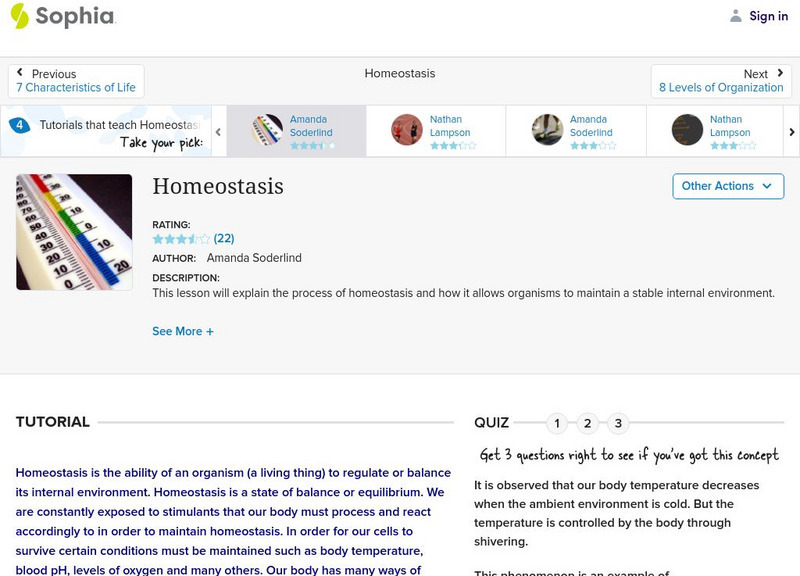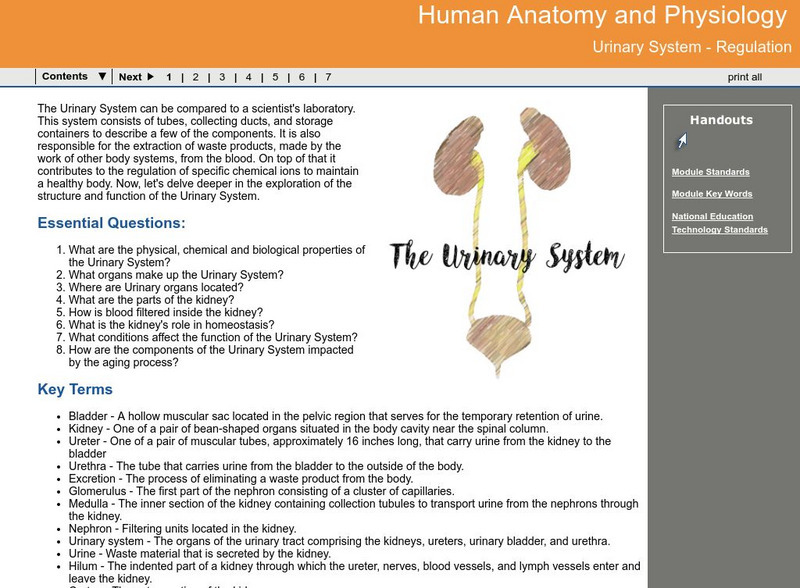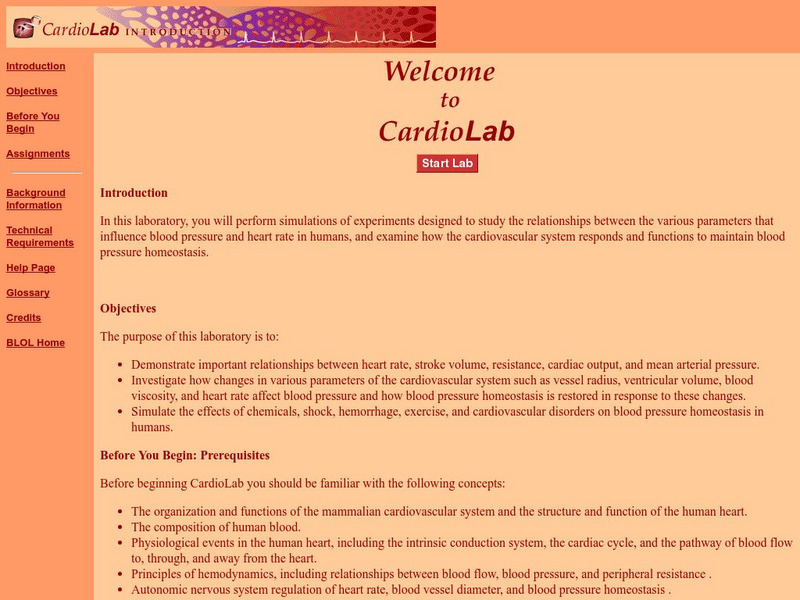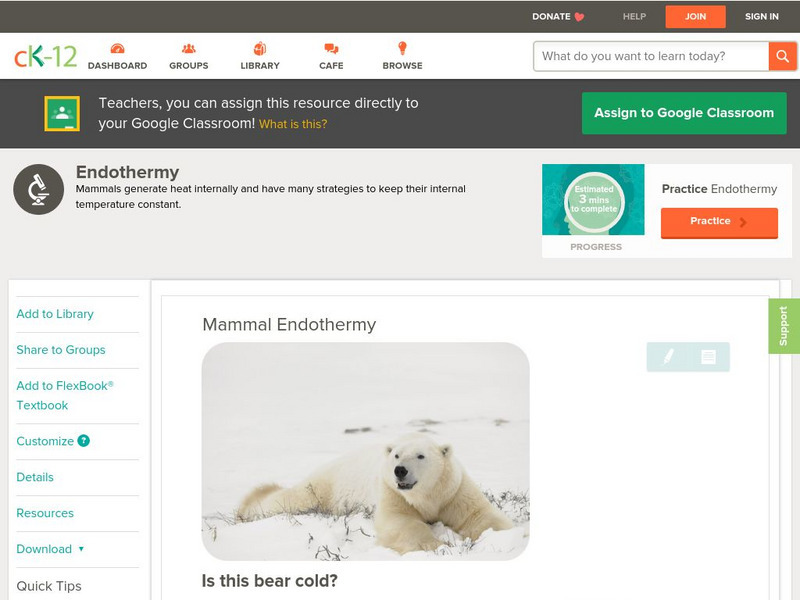CK-12 Foundation
Ck 12: Life Science: Homeostasis
[Free Registration/Login may be required to access all resource tools.] When you walk outside on a cool day, does your body temperature drop? No, your body temperature stays stable at around 98.6 degrees Fahrenheit. Even when the...
CK-12 Foundation
Ck 12: Biology: Homeostasis
[Free Registration/Login may be required to access all resource tools.] Explains the process in which organ systems work to maintain a stable internal environment.
CK-12 Foundation
Ck 12: Life Science: Kidneys
[Free Registration/Login may be required to access all resource tools.] The kidneys are important organs in maintaining homeostasis, the ability of the body to maintain a stable internal environment despite a changing environment....
Sophia Learning
Sophia: Homeostasis: Lesson 1
This lesson will explain the process of homeostasis and how it allows organisms to maintain a stable internal environment. It is 1 of 10 in the series titled "Homeostasis."
Sophia Learning
Sophia: Homeostasis
This lesson will explain the process of homeostasis and how it allows organisms to maintain a stable internal environment. [0:57]
University of Washington
Genome Sciences Education Outreach: What Can We Learn From Worms?
Multi-lesson unit in which students conduct an experiment comparing the effect of elevated salt in the environment on wild type worms and a mutant that is resistant to higher salt concentrations. Lessons enhance learning how worms...
Texas Education Agency
Texas Gateway: Internal Feedback Mechanisms
A learning module that explores how our body has internal feedback mechanisms to maintain homeostasis.
Georgia Department of Education
Ga Virtual Learning: Anatomy and Physiology: Urinary System Regulation
By completing this module, students will discover how the liver, kidneys, ureters, bladder, and urethra all work together to maintain homeostasis in the human excretory system.
Sophia Learning
Sophia: Homeostasis: Lesson 3
This lesson will explain the process of homeostasis and how it allows organisms to maintain a stable internal environment. It is 3 of 10 in the series titled "Homeostasis."
Sophia Learning
Sophia: Homeostasis: Lesson 4
This lesson will explain the process of homeostasis and how it allows organisms to maintain a stable internal environment. It is 4 of 10 in the series titled "Homeostasis."
CK-12 Foundation
Ck 12: Episd: Homeostatis
[Free Registration/Login may be required to access all resource tools.] Understand what homeostasis and why it is important to maintain.
Other
California State University: Biology Labs Online: Cardio Lab
A comprehensive set of virtual experiment assignments where students explore the roles of blood pressure and heart rate in maintaining a balanced cardiovascular system. Includes background information, glossary, online notebook, and...
CK-12 Foundation
Ck 12: Life Science: Protists Nutrition
[Free Registration/Login may be required to access all resource tools.] The cells of protists need to perform all of the functions that other cells do, such as grow and reproduce, maintain homeostasis, and obtain energy. They also need...
CK-12 Foundation
Ck 12: Life Science: Excretion
[Free Registration/Login may be required to access all resource tools.] You might have noticed that sometimes your urine is darker than usual. This can happens when your body is low on water and trying to reduce the amount of water lost...
Khan Academy
Khan Academy: Physiological Needs and Pregnancy
Read this passage and study the chart to complete the five-question quiz concerning physiological needs and pregnancy.
CK-12 Foundation
Ck 12: Life Science: 1.8 Characteristics of Life
Discover the five characteristics that all living things have in common.
CK-12 Foundation
Ck 12: Biology: Mammal Endothermy
[Free Registration/Login may be required to access all resource tools.] Describes how mammals maintain their body temperature.
OpenStax
Open Stax: Anatomy and Physiology:diseases Depressed/overactive Immune Response
This section is about how the immune system goes wrong. When it goes haywire, and becomes too weak or too strong, it leads to a state of disease. The factors that maintain immunological homeostasis are complex and incompletely understood.



















